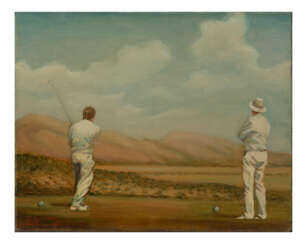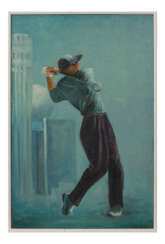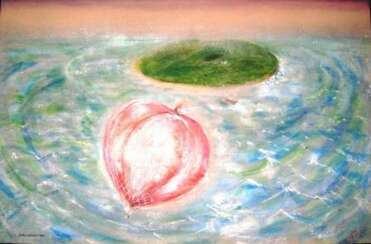гольф





Paul Gangolf, real name Paul Löwy, was a German expressionist painter, lithographer, woodcarver and journalist.
Paul was born into a Jewish family, began his work with articles in magazines on political topics, using the pseudonym Gangolf, during the First World War he served in various troops.
The peak of Paul Gangolf's creative activity came in the 1920s, when he worked in lithography, published and exhibited in Berlin, London and Paris.
After the National Socialists came to power, he was arrested and taken to the Esterwegen concentration camp, where he was murdered. Already after his death, in 1937, as part of the "Degenerate Art" campaign, Gangolf's paintings were confiscated from museums in Nazi Germany and most were destroyed. Surviving works by the artist can be found at the Museum of Modern Art in New York and others.


Paul Gangolf, real name Paul Löwy, was a German expressionist painter, lithographer, woodcarver and journalist.
Paul was born into a Jewish family, began his work with articles in magazines on political topics, using the pseudonym Gangolf, during the First World War he served in various troops.
The peak of Paul Gangolf's creative activity came in the 1920s, when he worked in lithography, published and exhibited in Berlin, London and Paris.
After the National Socialists came to power, he was arrested and taken to the Esterwegen concentration camp, where he was murdered. Already after his death, in 1937, as part of the "Degenerate Art" campaign, Gangolf's paintings were confiscated from museums in Nazi Germany and most were destroyed. Surviving works by the artist can be found at the Museum of Modern Art in New York and others.


Paul Gangolf, real name Paul Löwy, was a German expressionist painter, lithographer, woodcarver and journalist.
Paul was born into a Jewish family, began his work with articles in magazines on political topics, using the pseudonym Gangolf, during the First World War he served in various troops.
The peak of Paul Gangolf's creative activity came in the 1920s, when he worked in lithography, published and exhibited in Berlin, London and Paris.
After the National Socialists came to power, he was arrested and taken to the Esterwegen concentration camp, where he was murdered. Already after his death, in 1937, as part of the "Degenerate Art" campaign, Gangolf's paintings were confiscated from museums in Nazi Germany and most were destroyed. Surviving works by the artist can be found at the Museum of Modern Art in New York and others.


Paul Gangolf, real name Paul Löwy, was a German expressionist painter, lithographer, woodcarver and journalist.
Paul was born into a Jewish family, began his work with articles in magazines on political topics, using the pseudonym Gangolf, during the First World War he served in various troops.
The peak of Paul Gangolf's creative activity came in the 1920s, when he worked in lithography, published and exhibited in Berlin, London and Paris.
After the National Socialists came to power, he was arrested and taken to the Esterwegen concentration camp, where he was murdered. Already after his death, in 1937, as part of the "Degenerate Art" campaign, Gangolf's paintings were confiscated from museums in Nazi Germany and most were destroyed. Surviving works by the artist can be found at the Museum of Modern Art in New York and others.





























